When inspecting a transport stream using tsduck, I can see that some packets contains a PCR value in Hex. I am not sure how to convert these into timestamps.
For example, in the packet below the PCR value is 0x000002014CE
* Packet 179
---- TS Header ----
PID: 481 (0x01E1), header size: 25, sync: 0x47
Error: 0, unit start: 1, priority: 0
Scrambling: 0, continuity counter: 4
Adaptation field: yes (21 bytes), payload: yes (163 bytes)
Discontinuity: 0, random access: 0, ES priority: 0
PCR: 0x000002014CE
---- PES Header ----
Stream id: 0xE0 (Video 0)
PES packet length: 0 (unbounded)
---- Full TS Packet Content ----
47 41 E1 34 14 12 00 00 0D B0 7E 4E 0C 02 0A 22 8E 00 00 D1 2D 03 64 00
29 00 00 01 E0 00 00 84 C0 0A 31 00 07 44 B7 11 00 05 D4 37 00 00 00 01
09 30 00 00 01 06 01 03 03 84 19 80 00 00 01 41 9A 84 93 D1 13 7F F0 28
2C 26 B5 35 90 10 B7 32 8C FF 00 D3 47 BE 4C 9A 83 AE CD B8 9C 09 5A 60
07 BE C4 F2 2C 5D D3 24 6C 7F A0 E1 C4 7B BC FA 37 CA C5 C0 B0 C4 2C 91
96 09 07 22 C4 A8 55 FF C2 BF 0E 7E 10 74 6D 84 F2 08 9D D0 29 52 7F 2B
F6 3E C8 23 1F BC 4E 80 C3 AE FD AC F4 96 08 E5 13 C8 A7 41 20 B4 F6 F8
E1 14 4A 03 4C 8E 98 00 04 73 2D AE 83 31 0B C8 61 03 3A A1
What I tried is looking at the first few instances of packets that had the PCR values in them, then converting them to decimal and subsequently dividing by 90,000 which is the clock rate of the PCR clock (i.e the timebase).
But looking at the last column, it doesn't look right. It would seem that the intervals are too high. I thought that the PCR must insert PCR stamps at least every 100ms or so, but this seems to be too infrequent....
